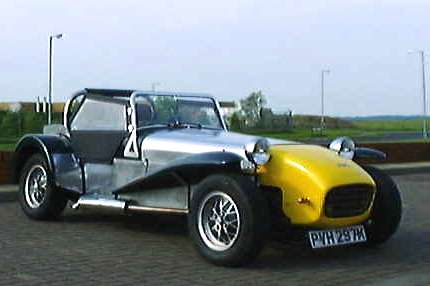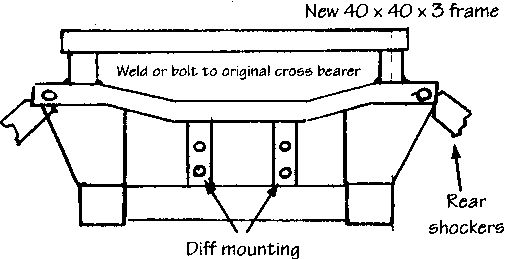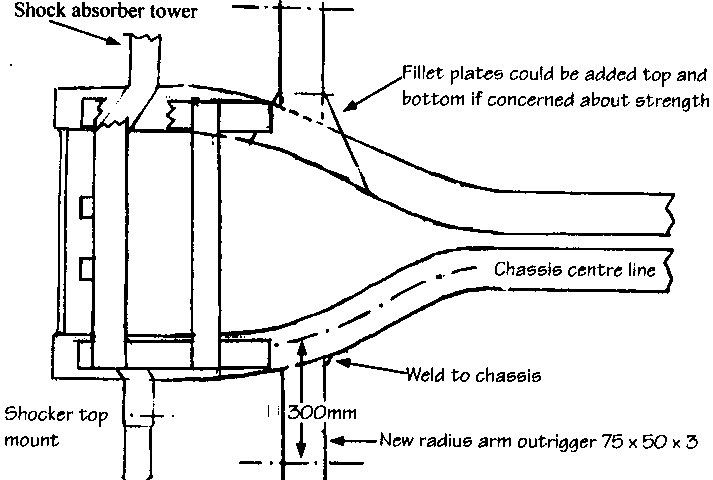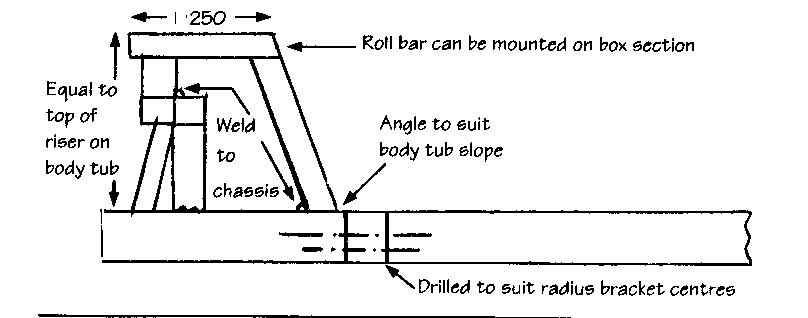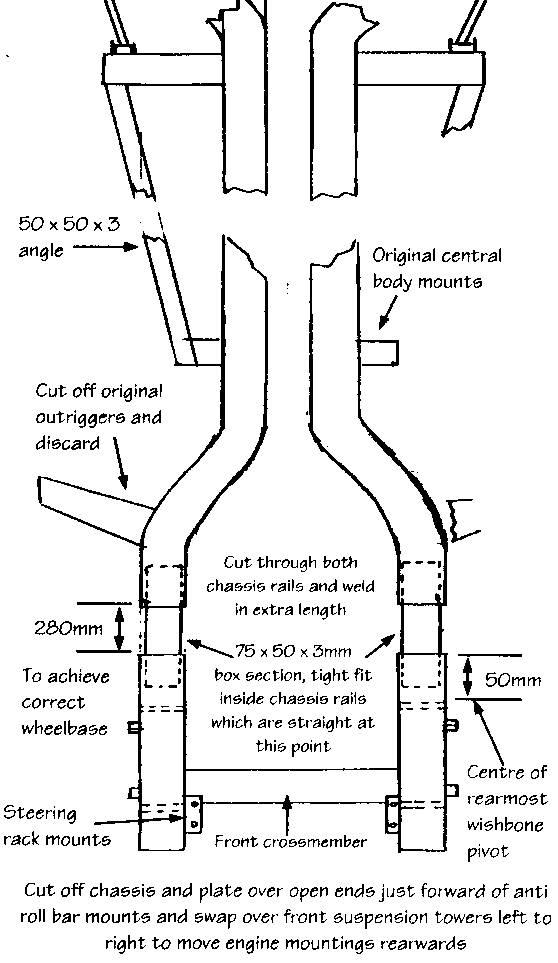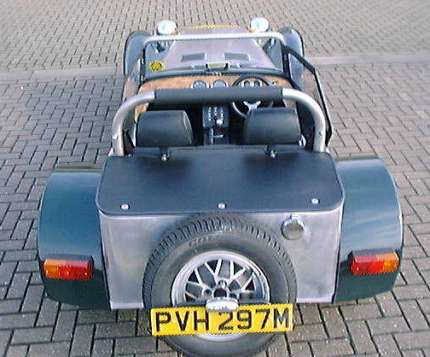 | ||
| Search |
|
|
RETRO DONOR LOCUST Build Report by John Jones (taken from the Spring 2000 newsletter)
When I began my Locust build in 1996 it was intended to be a conventional Ford based car, but not far into the construction the spectre of the SVA test rued its head. I had serious doubts that it would be possible to get the Locust type construction through the test. I've since been proved very wrong of course but at the time I didn't have enough confidence to progress my build any further then the bodytub stage. I was still keen to own a Locust and was intending to buy a second hand model however the couple of cars viewed in my price range were very poorly built. The "Ruby" article had just appeared in Locust Position when I saw a Triumph Spitfire based Locust at the Stafford show. Although built on a T&J chassis it used the standard rear swing axle. this made me think of doing the sum thing using an original chassis and running gear. The reasoning being that I had helped to build a Burlington Arrow many years earlier which is still in regular use and the plans were available from a friend who is a Triumph Sport Six Club member and who also knew of an unfinished 'restoration project' which was available both locally and cheap. After a bit of haggling I became the owner of 1974 Mark 4 Spitfire which had been off the road for several years I reasoned that by the time the build was complete the tax exemption would apply. 'Johnny Two Jags' killed this plan off by halting the scheme, it now applies only to pre 74 cars. The original 1300cc engine was seized but it came with a 1500cc Dolomite TC unit as a spare which turned out to be in excellent condition. I registered the Spitfire in my name with the new engine details; the DVLA will only consider retention of the original registration number if they already have the details on file. I managed to sell off all the bits I didn't need and so ended up with a rolling chassis, engine, gearbox and registration document. The Burlington plans detail how to modify the chassis to the necessary wheelbase and in the case of a Spitfire donor chassis, the dimensions for new radius arm mountings. These are found on the body tub of the Spitfire which I wouldn't be using of course.
I'm lucky enough to work for on engineering company so the modifications were fairly easily accomplished but you do need space to work and to be a proficient welder. At this point I refurbished the suspension components and relocated the engine and gearbox mountings as far forward as possible to bring the gearstick closer to hand. Once the engine position was finalised I could modify the propshaft which I cut,sleeved and extended at work using thick wall steel tube. It was then balanced by a local specialist.
The gearbox remote shift was extended as in the White Rose build manual but I fitted additional support, a mini exhaust rubber bobbin, to carry the extra weight when bolted to a transmission tunnel mounted bracket later. A trial fit of the bodytub on the chassis revealed that I would need to provide some additional support for the rear sloping riser of the body tub and carry the rollover bar. This was done using 2" square tube welded to the chassis rails forward of the rear axle and extending up and back to the shock absorber mounting on the rear of the chassis. making it similar in appearance to the White Rose item. Additional ladder rails were installed between the new radius arm mounts at the rear to two original body mounts forwards to provide secure fixings for the body tub.
Removal of the front bumper/bonnet mounting completed the chassis modifications, which was then painted and new brake lines installed. The rest of the build up has followed similar lines to the Escort based Locust, apart from using Triumph components instead of Ford. The main points are as follows: Radiator - mounted vertically the engine driven fan appears to cool well enough. Steering column - extended with the addition of a universal joint sourced from a local bearing company Fuel tank - the filler neck was moved and the Spitfire chrome flip cap re-used sender unit and gauge are standard. Wheels - second hand alloys (I really wanted minilites or similar) for Triumphs seem to he at a premium but I found a set of Dolomite Sprint alloys with excellent tyres complete with sleeve nuts at the Harrogate show, unfortunately the nuts were 7/16"WJF. I needed 3/8*UNF. Special nuts were available but won more expensive than the wheels and tyres; a friend come to the rescue, and made a set on a CNC machine from stainless steel. The cost Several pints and a curry. well worth the money. Wiper Mechanism - only slight alteration needed to drive cable and guide tubes the White Rose GRP bulkhead made mounting these very easy. you can just turn the whole thing upside down for access. Instruments - standard. they also look right. Seats -originally from an XJS, a combination of rear dual backrest and front seat squabs all were narrowed and mounted on 1/2' ply, they aren't adjustable but are comfortable enough and I'm pleased with the way they have turned out. Exhaust - home made from a collection of bends, a length of tube and a silencer all in stainless steel bought, again at the Harrogate show which has consistently been the cheapest venuee I have visited. Tack welded together on the car then removed and finish welded with an arc welder using 316L rods. Total cost £35. Electric's - re-wired using all new components but based on the Spitfire diagram and colour code, I wasn't keen to do this job but it turned out to be easier than expected.
By December of 1999 the car was nearing completion I contacted the DVLA and told them of my build. They referred me to my Local Vehicle Registration Office who turned out to be very helpful. They required to inspect the car before issuing a new chassis number which I stamped on the chassis in their car park. Insurance was arranged through Footman James (the least expensive plus knowledgeable about kitcars in general). I then booked the MOT test which luckily the Locust passed first time. Returning to the LVRO to complete the registration procedure, they validated the MOT certificate with the original registration number and after relieving me of a load of readies issued a road fund licence within two weeks I had received my new V5 document describing the car correctly as a Locust Sports.
The choice of donor may not be to everyone's taste. Some may see it as a backwards step certainly the rear swing axle set-up is not ideal making ride height setting difficult. I'm still not satisfied with the way the wheel arch to tyre clearance looks but I will get it right eventually, even if I have to resort to converting to a Dolomite live axle. Something that would be possible now that the registration is completed but I intend to put some summer motoring miles on the clock to see how everything performs before I attempt anything too radical. The main work still to do is the paintwork and final trimming. I wouldn't say the build has been easy but I doubt that overall it was much more difficult than a "standard" build so if anybody is considering doing something similar. (I have seen a spitfire chassis with V5 advertised in the newsletter so I guess the same thought has occurred to other Locust enthusiasts) just have a go if I can do it, it can't be difficult.
John Jones. (Tyne & Wear) | ||||||||
 |
|
|

